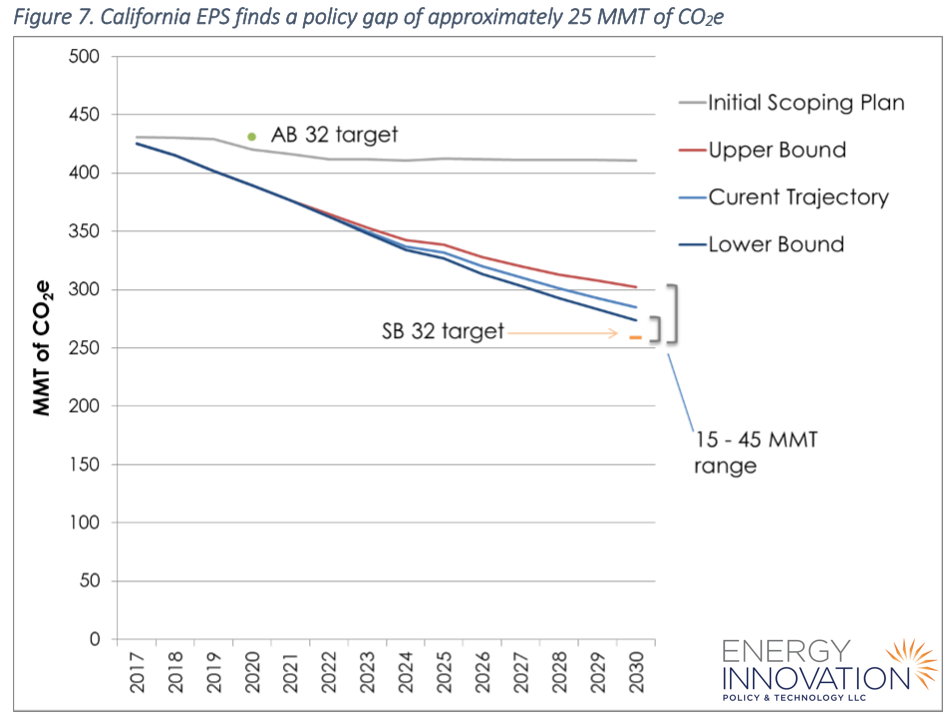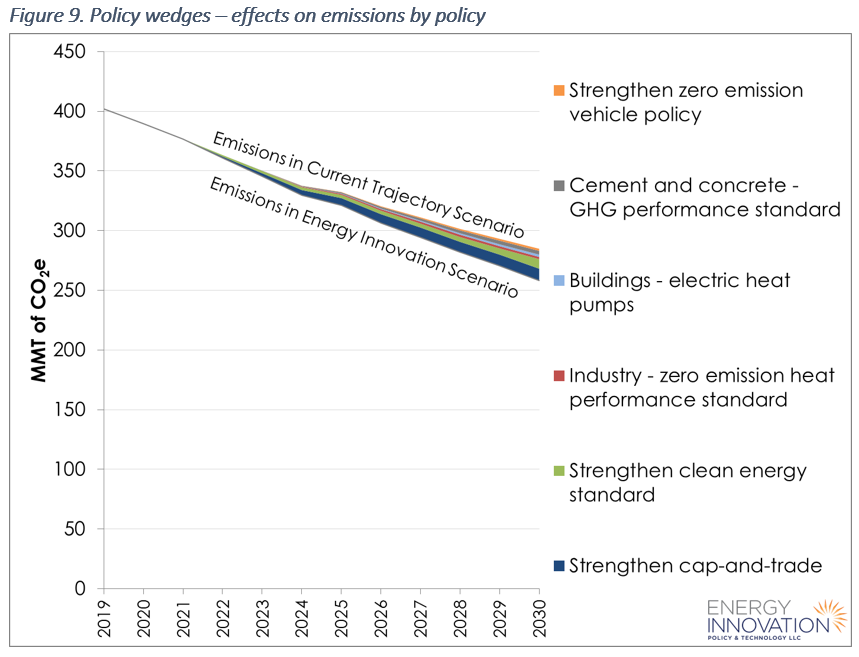California is an unquestioned leader in America’s – and the world’s – clean energy transition, routinely establishing aggressive decarbonization policies, and then achieving them ahead of schedule, all while building a thriving economy.
But as California’s climate policy targets grow more stringent, can the state’s existing policies meet its goals?
A new California version of Energy Innovation’s peer-reviewed Energy Policy Simulator analyzes the state’s expected future emissions trajectory and the likelihood it can achieve its 2030 goal of reducing emissions 40 percent below 1990 levels.
While California achieved its 2020 emissions reduction goal early, in 2016, the state’s most recent data still shows emissions of 424 million metric tons carbon dioxide equivalent in 2017, meaning that to meet the 2030 goal, the state must nearly double the annual rate of emissions reductions.
The California EPS analysis, led by our Director of Research Chris Busch, finds the state’s existing climate policies will reduce 2030 emissions more than 100 million metric tons but leave emissions about 25 million metric tons above the 2030 target.

Fortunately, the model also identifies six recommendations that together cross this emissions reduction gap and meet the 2030 target:
- Link cap-and-trade program emission permit prices to the desired rate of economy-wide reductions by reforming the program’s price floor. Conversely, if the overall rate of reductions get on track, the price could hold steady.
- Increase clean energy standards on electricity supply 7 percent above the state’s 60 percent renewable electricity standard for 2030.
- Increase the zero-emission vehicles goal from 5 million to at least 7.5 million by 2030, hitting 80 percent new car and light truck sales by that year.
- Accelerate building electrification by pushing advanced electric heat pumps to at least 50 percent of new water and space heaters for residential buildings.
- Establish a zero-emission performance standard for heat applied to the industry sector to increase use of solar thermal heat while encouraging new technology innovation.
- Establish an emission performance standard for cement and concrete production, which is now California’s largest source of coal combustion.

These policy recommendations could generate an estimated $7 billion in direct economic benefits along with $14 billion in health and climate benefits through 2030, demonstrating once again that it is now cheaper to save the planet than it is to destroy it. They also set up the state for long-term emission success as a technology leader in this booming realm.
The California EPS is free to use online and open-source, so policymakers and the public can easily evaluate these recommendations to see how each policy reduces emissions. The model also shows the climate, health, and economic impacts of different options.
It’s easy to forget how challenging California’s 2020 emissions reduction goal seemed when it was set, but the state met it with a combination of innovation and smart policy. We should view California’s 2030 target the same way – an ambitious goal that can be achieved by designing and implementing the most effective decarbonization policies. The California EPS is a tool to do just that.
Check it out: https://california.energypolicy.solutions
